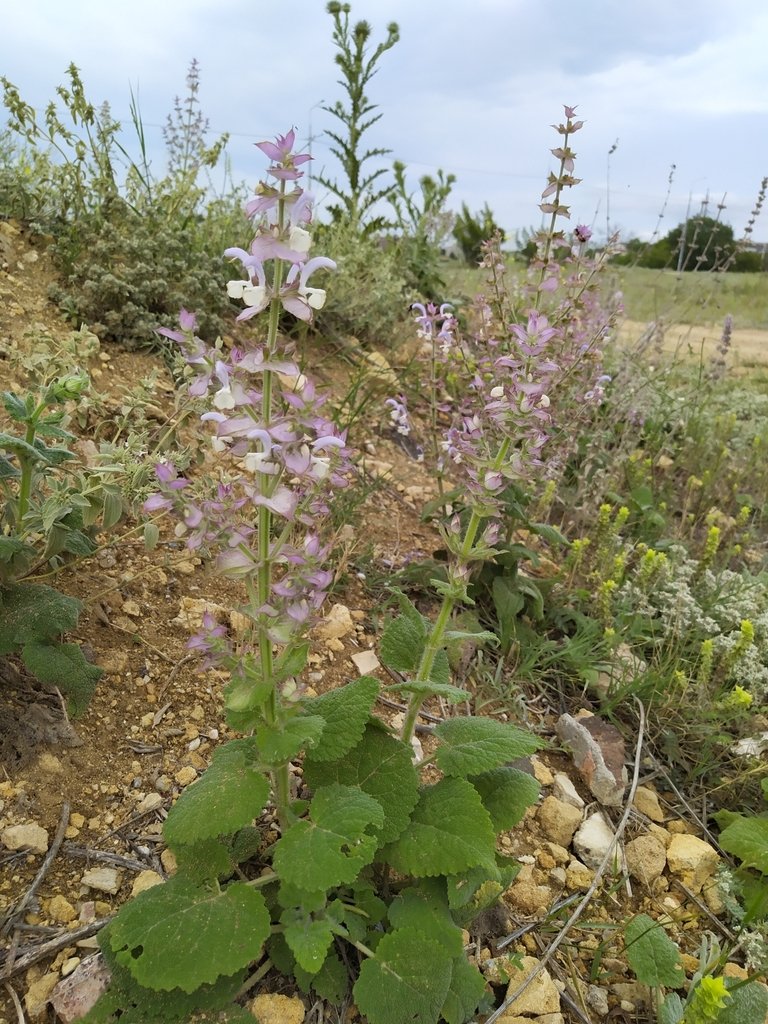The Alluring Aroma of Clary Sage
Salvia sclarea
Family: Lamiaceae
Perennial Herb
Descriptions of this plant goes back to the writings of Theophrastus (4th century BCE), Dioscorides (1st century CE), and Pliny the Elder (1st century CE).
This species is native to the northern Mediterranean Basin, along with some areas in north Africa and Central Asia. The plant has a lengthy history as an herb and is currently grown for its essential oil used in cosmetics and perfume, and in the food industry.
USES
The distilled essential oil is used widely in perfumes and as a muscatel flavoring for vermouths, wines, and liqueurs. It is also used in aromatherapy. In the United States, large scale production is concentrated in northeastern North Carolina in the counties surrounding Bertie County. The chemical sclareol contained in clary sage oil has a low molecular weight and is absorbed transdermally. In an experiment in which sclareol was dissolved in jojoba oil and applied to mice, it was detected in the blood 30 minutes after application and higher concentrations of sclareol were detected in the liver but did not cause liver dysfunction.
Leaves are delicious in omelets, fritters, and stews.
Clary seeds have a mucilaginous coat, which is why some old herbals recommended placing a seed into the eye of someone with a foreign object in it so that it could adhere to the object and make it easy to remove. This practice is noted by Nicholas Culpeper in his Complete Herbal (1653), who referred to the plant as "clear-eye". It was used as an ingredient in wine and beer production. In 16th-century Germany elderflower infused clary was added to Rhine wines to make a more potent varietal known as Muscatel.
Clary sage essential oil is primarily a woman's botanical. It is excellent for balancing female hormones and of great use during menstruation. It is a uterine tonic and with an emmenagogue action, it can promote the healthy flow of blood during the monthly period. It is also used to treat menstrual cramps as it has anti-spasmodic and sedative properties. It is relaxing and can balance the mood at this time.
It is also used in the menopause to balance female hormones and support the process of change the body goes through at this time. It can alleviate hot flushes. In can act as a hormone re-balancer for all stages of a woman's life. Clary sage is also used during labor, as it can bring relief to contractions and bring a sense of calm and support.
This botanical is also calming for the nervous system, it can be used to treat panic attacks, tension headaches, migraine and depression associated with hormone imbalance. Clary sage is also an aphrodisiac and it can stimulate sexual energy and be useful in the case of sexual dysfunction for women. It can help a woman to relax, treating frigidity and lack of sexual desire. It is mentally and emotionally uplifting and euphoric. It is thought to be a master healer for women and has an overall nurturing, holding and supportive quality.
PRESERVATION
The foliage is dried and stored. The foliage can also be made into a tincture. The pressed oil is most universally used, but hard to extract at home.
GROWING
SEASON & PLANTING
Plant anytime.
SOIL & NUTRITION
This plant grows in many soil types, best planted in amended garden soil that is well-drained.
TEMPERATURE & SUN EXPOSURE
Plant in full to part sun. Hardy to 5°F.
WATER
Moderate to regular water, if good drainage is present.
HARVESTING
Cut foliage as needed.
WILDLIFE
Occasionally, noctuid moths may feed on plants. They grow back quickly so long as they have the proper amount of sun and water. Flowers attract native bees and butterflies.
INVASIVENESS
Clary sage does not seem to be escaping cultivation in our region.

